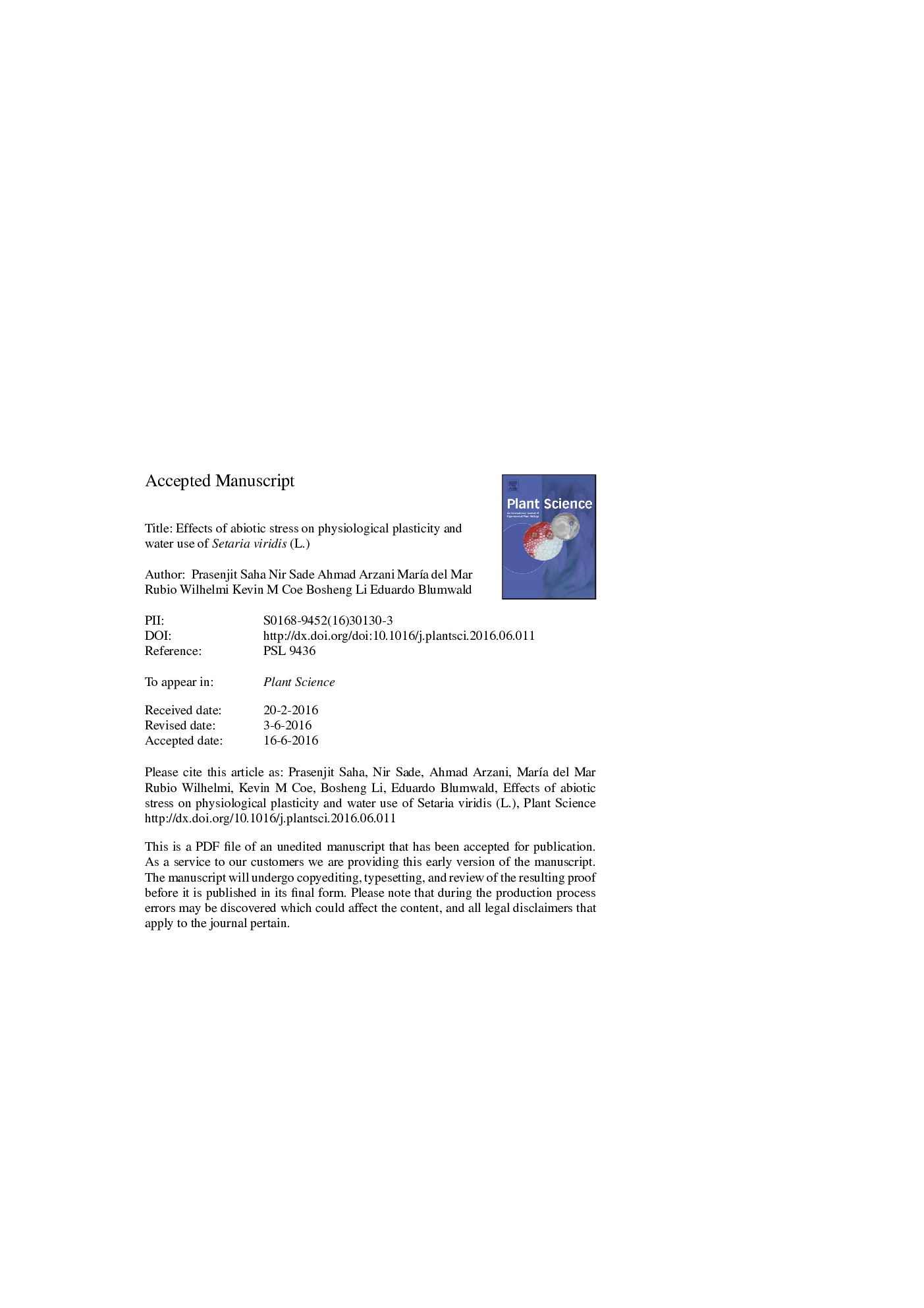| Article ID | Journal | Published Year | Pages | File Type |
|---|---|---|---|---|
| 8357163 | Plant Science | 2016 | 50 Pages |
Abstract
The emerging model Setaria viridis with its C4 photosynthesis and adaptation to hot and dry locations is a promising system to investigate water use and abiotic stress tolerance. We investigated the physiological plasticity of six S. viridis natural accessions that originated from different regions of the world under normal conditions and conditions of water-deficit stress and high temperatures. Accessions Zha-1, A10.1 and Ula-1 showed significantly higher leaf water potential (Ψleaf), photosynthesis (A), transpiration (E), and stomatal conductance (gs) rates compared to Ast-1, Aba-1 and Sha-1 when grown under stress conditions. Expression analysis of genes associated with C4 photosynthesis, aquaporins, ABA biosynthesis and signaling including genes involved in stress revealed an increased sensitivity of Ast-1, Aba-1 and Sha-1 to stresses. Correlation analysis of gene expression data with physiological and biochemical changes characterized A10.1 and Ast-1 as two extreme tolerant and sensitive accessions originated from United States and Azerbaijan under water-deficit and heat stress, respectively. Although preliminary, our study demonstrated the plasticity of S. viridis accessions under stress, and allows the identification of tolerant and sensitive accessions that could be use to study the mechanisms associated with stress tolerance and to characterize of the regulatory networks involved in C4 grasses.
Related Topics
Life Sciences
Agricultural and Biological Sciences
Plant Science
Authors
Prasenjit Saha, Nir Sade, Ahmad Arzani, Maria del Mar Rubio Wilhelmi, Kevin M. Coe, Bosheng Li, Eduardo Blumwald,
